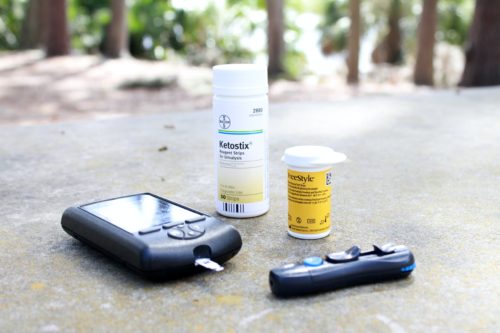How to Accurately Document a 60-Day Summary in Home Health
Documentation is a critical aspect of providing quality care in home health settings. A 60-day summary is a comprehensive report that reflects the progress and outcomes of a patient’s care plan over a two-month period. This summary is not only important for internal purposes but also serves as a communication tool between care providers, the patient, and their families. Additionally, it is used to meet regulatory and billing requirements, ensuring continuity of care and improving patient outcomes. Here’s how to accurately document a 60-day summary in home health care.
1. Understand the Purpose of the 60-Day Summary
Before diving into the details, it’s crucial to understand why the 60-day summary is needed. It serves several key purposes:
- Progress Tracking: It tracks the patient’s response to the plan of care and any significant changes or improvements in their condition.
- Regulatory Compliance: Home health agencies must document care in a way that complies with Medicare and other payer requirements.
- Care Coordination: It ensures all members of the care team are informed and aligned regarding the patient’s status and future care needs.
- Billing and Reimbursement: The summary helps justify continued care and supports billing for services rendered.
2. Gather All Necessary Information
Start by collecting the following information before you begin documenting:
- Patient Information: Name, date of birth, diagnosis, primary physician, and other essential identifying details.
- Care Plan Goals: Review the initial care plan and any updates or changes over the 60-day period.
- Visitation Records: All visits made during the 60 days, including frequency, duration, and services provided.
- Patient’s Health Status: Include assessments, lab results, vitals, and any other relevant clinical information.
- Medication List: A record of prescribed medications, dosages, and any changes made during the 60-day period.
- Interventions and Outcomes: Document what interventions were provided, including therapy, wound care, or education, and the outcomes or improvements.
3. Structure the 60-Day Summary
When creating the summary, it’s important to follow a clear, structured format. A well-organized document ensures that all relevant details are addressed, making it easier for the care team to evaluate progress and next steps. Here’s a suggested structure:
-
Patient Overview: Provide basic patient information, including their medical condition, diagnosis, and care plan goals.
-
Summary of Care Provided: This section should list the key services provided to the patient over the 60 days. Be specific and include dates for key interventions, such as:
- Skilled nursing visits (e.g., wound care, medication management)
- Therapy sessions (e.g., physical therapy, occupational therapy)
- Any other specialized services (e.g., speech therapy, home health aide services)
-
Progress Towards Goals: Discuss the patient’s progress in relation to their established goals. Did the patient meet, exceed, or fall short of the expected outcomes? Include objective data such as wound healing, mobility improvement, or any changes in functional status.
-
Changes in Condition: Note any significant changes in the patient’s health status, such as the onset of new symptoms, exacerbations, hospitalizations, or improvements in function.
-
Challenges or Barriers: Address any barriers or challenges encountered, such as patient non-compliance, difficulty in reaching the patient, or other issues that may have impacted the patient’s care. This helps show a full picture of the situation.
-
Caregiver Involvement: If applicable, include details about the role of family members or other caregivers in assisting with the patient’s care. Document any training or education provided to caregivers.
-
Patient and Family Communication: Record interactions with the patient and family, particularly regarding care goals, changes in the treatment plan, and education.
-
Plan Moving Forward: Outline the next steps in the care plan, including goals for the next 60 days, any adjustments to the patient’s treatment, and additional interventions required.
4. Use Objective, Clear, and Concise Language
Accurate documentation relies heavily on clear, objective, and concise language. Avoid using subjective terms or vague descriptions. Use measurable data wherever possible to demonstrate progress or challenges. For example:
- Subjective: “The patient seems to be improving.”
- Objective: “The patient’s wound size decreased by 30% since the last visit.”
This not only improves clarity but ensures the summary is legally defensible, if necessary.
5. Incorporate Relevant Clinical Evidence
If the patient’s care plan included specific clinical objectives, such as improving range of motion or reducing pain levels, include measurable evidence to show progress. This could be in the form of:
- Test results (e.g., lab reports, diagnostic imaging)
- Assessment scales (e.g., the Braden Scale for pressure ulcer risk)
- Vital signs (e.g., blood pressure, heart rate)
- Functional status measures (e.g., ability to perform activities of daily living)
Including this clinical data helps provide a thorough picture of the patient’s care, ensuring the documentation is both comprehensive and evidence-based.
6. Ensure Timeliness and Accuracy
Timeliness is a key factor in home health documentation. Ensure that the 60-day summary is completed within the required timeframe. An accurate and timely summary reflects up-to-date information, which is essential for effective care coordination.
Additionally, make sure all documentation is consistent and error-free. Double-check dates, patient details, and the accuracy of medical data before submission.
7. Collaborate with the Care Team
Home health care involves multiple professionals, from nurses and therapists to social workers and home health aides. Collaboration is key to providing the best care and ensuring the 60-day summary is accurate and complete. Engage with other members of the care team for input, updates on the patient’s progress, and feedback on any changes to the care plan.
8. Stay Compliant with Regulatory Guidelines
Home health agencies must adhere to strict regulatory requirements, particularly for Medicare and Medicaid patients. Familiarize yourself with these requirements to ensure that your documentation complies with federal and state regulations. Be aware of any specific guidelines related to patient assessments, outcome measures, and care planning.
Conclusion
Accurately documenting a 60-day summary is a vital component of home health care. It requires a clear understanding of the patient’s progress, careful attention to detail, and collaboration with the entire care team. By following the right structure, using precise language, and adhering to regulatory guidelines, you can ensure the 60-day summary is a useful tool for both quality care and compliance purposes. With this practice, you’ll help support patient recovery, inform care decisions, and contribute to the overall effectiveness of home health services.
Editor's Pick
Leave A Comment
Related Posts
Transition from OASIS-E to OASIS-E1: Key Changes and Implications for […]
Importance of Clinical Narrative and Nurse Teachings while Documenting Home Health OASIS Assessments
Importance of Clinical Narrative and Nurse Teachings while Documenting Home […]
Navigating the Complexities of Medicare and Medicaid Reimbursement for Home […]
Engaging Your Team Around the IPR: Turning Data into Motivation […]
Engaging Your Team Around the IPR: Turning Data into Motivation […]

